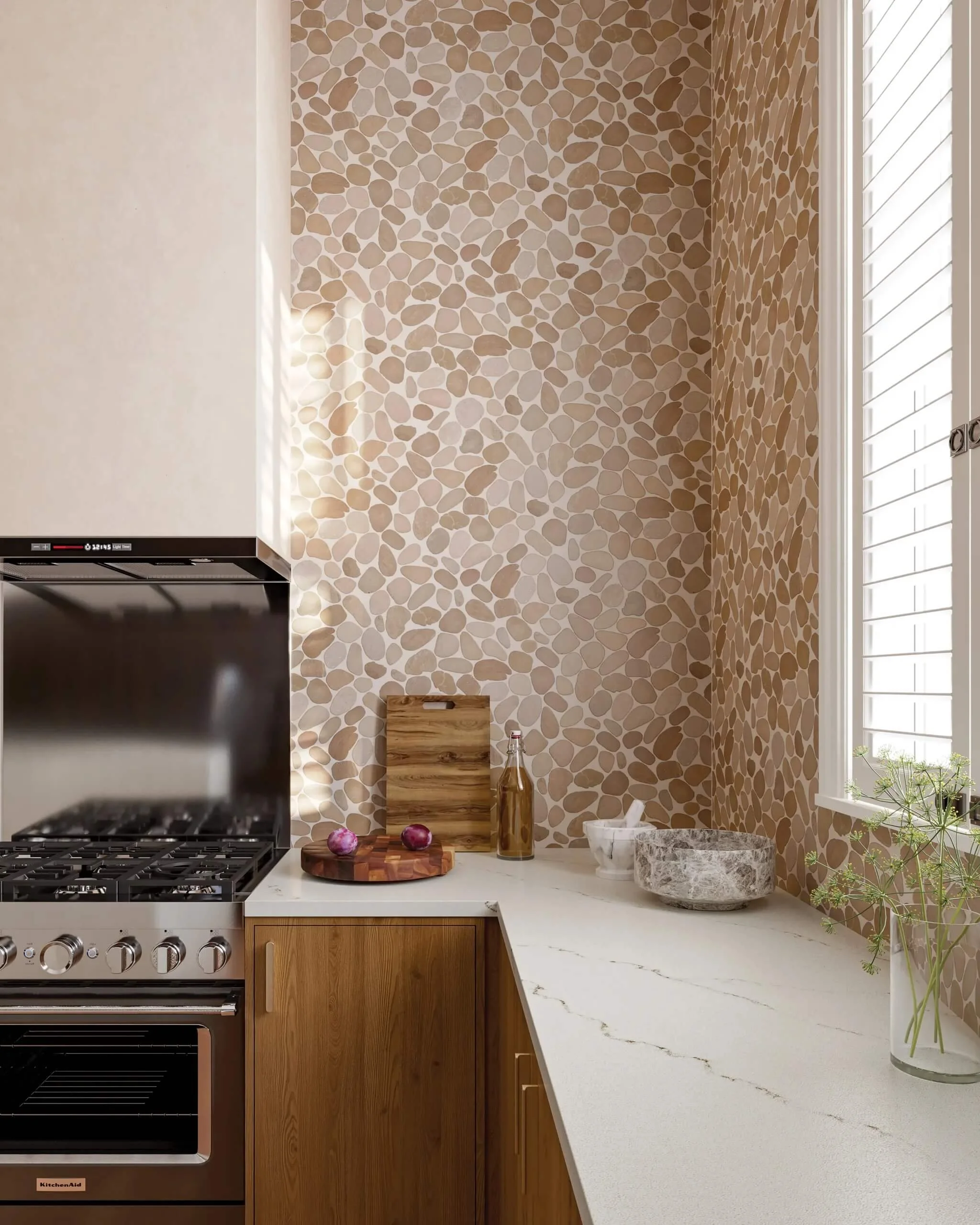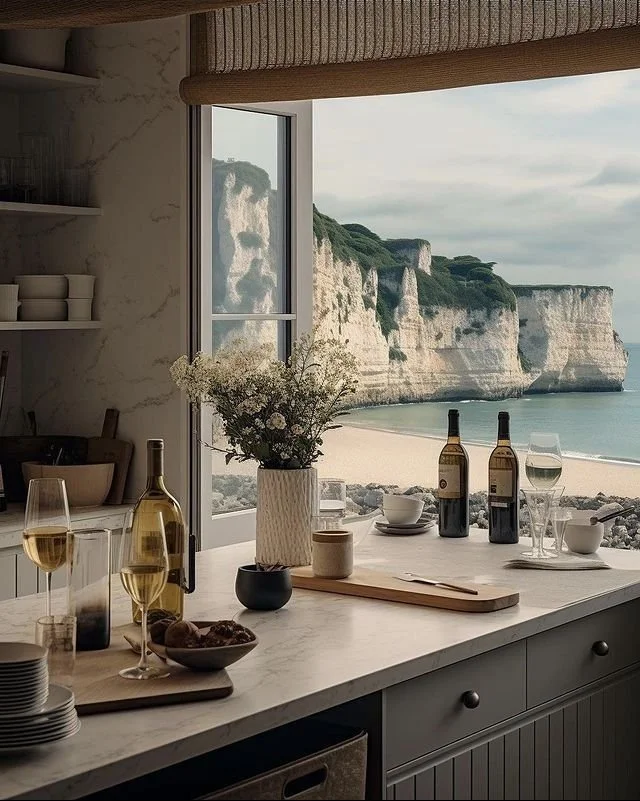Transforming your living space into a personal sanctuary for film and entertainment can be exciting. In this article, we share essential steps and tips to help you design the ultimate cinematic environment right at home.
From selecting the perfect room location to optimizing acoustics, choosing the right equipment, and creating a cozy atmosphere, in this guide, we equip you with everything you need to bring your vision to life. Whether you're a movie aficionado or simply looking to enhance your family's movie nights, this comprehensive resource will inspire and empower you to create an immersive viewing experience.
No. 1
Planning Your Home Theater Space
Planning your home theater space is key to creating an awesome movie-watching experience. The right room and good acoustics will make a big difference in how your setup performs.
Choosing the Right Room
Pick a room that can be darkened easily. Basements work great for home theaters. They're usually away from outside noise and have few windows. If you can't use a basement, look for a room with minimal windows.
Your room should be big enough for your screen and seating. Measure the space carefully. A good rule is to sit about 1.5 times the screen width away from the screen. So for a 10-foot wide screen, you'd want about 15 feet of room depth.
Consider a dedicated room if possible. This lets you control light and sound better than a shared space.
Understanding Room Acoustics
Room shape affects sound quality a lot. Square rooms can create sound issues. Rectangular rooms usually work better for home theaters.
Hard surfaces like bare walls bounce sound around. This can make dialogue hard to understand. Add some soft items to absorb sound. Curtains, carpets, and fabric wall panels all help.
Think about where you'll put speakers. Keep them away from corners and walls if you can. This helps prevent bass buildup and gives a clearer sound.
Ceiling height matters too. Higher ceilings often sound better, but very high ceilings can create echoes. Aim for 8-12 feet if possible.
No. 2
Visual Components
A great home theater needs amazing picture quality. The right screen or display can make movies and shows come to life in your living room.
Selecting a Screen
Screen size matters a lot for your home theater. Bigger screens give a more immersive experience. Measure your room to see how large you can go. A 100-inch or larger screen works well for most spaces.
Think about screen material too. White screens are common, but gray screens can improve contrast. Acoustically transparent screens let you put speakers behind them for better sound.
Don't forget about the resolution. 4K screens show incredible detail. 8K is new but has limited content right now. Match your screen's resolution to your video sources for the best picture.
Projector vs TV
Projectors can give you a huge screen size for less money. They work great in dark rooms. But they need more setup and maintenance than TVs.
TVs are brighter and work better in rooms with some light. Smart TVs have built-in streaming apps. OLED and QLED TVs offer amazing picture quality with deep blacks and vivid colors.
4K TVs are standard now. They show super sharp images, even up close. 8K TVs exist but are very pricey. Most content isn't in 8K yet, so 4K is plenty for now.
Think about where you'll put your screen. TVs are easier to set up anywhere. Projectors need careful placement and a good screen or wall.
No. 3
Audio Essentials
Great sound is key to an awesome home theater. Let's look at the most important parts of your audio setup.
Choosing Speakers
You'll want to pick speakers that fit your room and budget. For the best sound, go with a 5.1 or 7.1 setup. This means 5 or 7 main speakers plus a subwoofer.
Place your front left and right speakers on each side of your TV. Put the center channel speaker right above or below your screen. This speaker is crucial for clear dialogue.
Surround speakers go to the sides or behind your seating area. They create an immersive sound field. For Dolby Atmos, add height speakers on the ceiling or use up-firing modules.
Match your speakers for a balanced sound. Many brands sell complete sets that work well together.
The Importance of a Subwoofer
A subwoofer handles the low bass sounds that other speakers can't. It adds depth to music and makes movie explosions feel real.
Place your sub in a corner for more bass. But try a few spots to find where it sounds best in your room. Some people use two subs for even coverage.
Look for a powered subwoofer with at least a 10-inch driver. Bigger rooms need bigger subs. A good sub can play down to 20 Hz or lower.
Don't crank the volume too high. The sub should blend with your other speakers, not overpower them.
Receiver and Sound System Integration
Your receiver is the brain of your audio system. It takes all your audio sources and sends them to the right speakers.
The connection between the receiver and the speakers is usually made using specific connectors. These connectors are responsible for transmitting the audio signals and ensuring that the signals are efficiently passed from the receiver to the speakers.
In a home theater system, speaker wires are usually simple wires, but to facilitate the connection and reduce the risk of poor contact, banana plugs or other types of connectors are used to connect these bare wires to the speaker output terminals of the receiver.
Pick a receiver with enough power for your speakers. Look for one with at least 80 watts per channel for most setups.
Make sure it has all the inputs you need for your devices. HDMI is key for modern systems. Some receivers offer Wi-Fi and Bluetooth for streaming.
Use the auto-setup feature to calibrate your speakers. This sets the right volume levels and delays for your room.
Many receivers support Dolby Atmos and DTS for 3D sound. These formats add height to your audio for a more lifelike experience.
Best Buy
Your go-to destination for the latest in electronics and home appliances. With a wide selection of products, from cutting-edge gadgets to essential home tech, they have you covered with expert advice and unbeatable prices.
No. 4
Tech Specs and Features
Home theaters today offer amazing picture and sound quality. You'll want to understand the latest display technologies and audio formats to get the most immersive experience.
HDR, Dolby Vision, and More
HDR (High Dynamic Range) makes images pop with brighter highlights and deeper blacks. You'll see more details in both dark and bright areas. Dolby Vision is an advanced form of HDR that adjusts the picture frame-by-frame.
HDR10 is the basic HDR standard, while HLG (Hybrid Log-Gamma) works well for live TV. For the best picture, look for a 4K Blu-ray player and TV or projector that supports multiple HDR formats.
Dolby Atmos adds height channels to surround sound, creating a 3D audio bubble. You'll hear sounds move around and above you. It's great for movies and gaming.
Understanding 4K and 8K Resolutions
4K resolution (3840 x 2160 pixels) gives you incredibly sharp images with four times the detail of 1080p HD. Most new TVs and many projectors now offer 4K. You'll need to sit closer to really see the difference, especially on smaller screens.
8K (7680 x 4320) is the next step up, with 16 times the pixels of HD. It's impressive but very expensive. There's also little 8K content available yet. For most home theaters, 4K is plenty.
4K gaming is becoming more common on new consoles and PCs. You'll need a TV or projector with low input lag and fast response times for the best gaming experience.
No. 5
Home Theater Sources and Content
A great home theater needs awesome content to show off its capabilities. You have lots of options to feed your system with high-quality movies, shows, games, and music.
Streaming Services
Streaming is super popular for home theaters now. You can get an Apple TV, Roku, or Amazon Fire Stick to access tons of content. Netflix, Hulu, and Disney+ offer 4K HDR movies and shows. For the best picture, look for Dolby Vision titles. Don't forget about music - Spotify and Tidal sound amazing on a good system.
Some TVs have streaming apps built-in. But a separate box often works better. They're faster and get more updates. Plus, you can take them with you to hotels or friends' houses.
Gaming Consoles and Media Players
Gaming consoles double as great media players. The Xbox Series X and PlayStation 5 can stream 4K content. They also play 4K Blu-rays.
If you're not into gaming, dedicated media players are another option. The Nvidia Shield TV Pro is a popular choice. It streams 4K HDR content and can upscale older shows.
For music lovers, there are hi-res audio players. They can play lossless files that sound better than MP3s or streaming.
Physical Media - Blu-ray and Beyond
Don't count out discs yet! Blu-rays still offer the best picture and sound quality. A good 4K Blu-ray player is a must for movie buffs. They can also play regular Blu-rays, DVDs, and CDs.
Ultra HD Blu-rays give you an amazing 4K picture with HDR. The audio is often better than streaming too. You'll hear details you never noticed before.
For classic movie fans, some players can upscale DVDs to look better on 4K TVs. It's a great way to enjoy your old collection.
No. 6
Setting Your Budget
The key first step is deciding how much to spend on your home theater. You'll want to think about what matters most to you. Is it picture quality? Sound? Comfort?
Start by looking at your finances. Figure out how much you can comfortably set aside for this project. Remember, you don't have to buy everything at once.
A basic setup can cost as little as $1,000. This might include a decent TV, a soundbar, and a streaming device. For $2,000-$3,000, you can get a larger 4K TV and better speakers.
High-end systems can run $5,000 or more. These often have top-of-the-line TVs, surround sound, and fancy seating.
Don't forget to budget for extras like:
Cables and wires
Wall mounts
Furniture
Room treatments
You can save money by shopping sales and looking for refurbished gear. Also, consider upgrading parts of your system over time as your budget allows.
Remember, a great home theater doesn't have to break the bank. With smart choices, you can create an awesome setup that fits your budget and needs.
Takeaways
Building your dream home theater is not just about technology; it's about creating a sanctuary that reflects your unique tastes and enhances your viewing experience. By considering factors such as room layout, soundproofing, seating, and equipment selection, you can design a space that elevates both casual movie nights and epic cinematic events.
Embrace your creativity and allow your personality to shine through your choices, ensuring that your home theater becomes a cherished space for relaxation and entertainment. With careful planning and thoughtful execution, you’ll transform your vision into reality, inviting friends and family to share in the magic of your personal cinema experience for years to come.
Looking For Home Resources?
Looking to enhance your living space and create a sanctuary that supports your well-being? Explore our home partners who offer a wide range of resources to elevate your home environment.










































































































































































